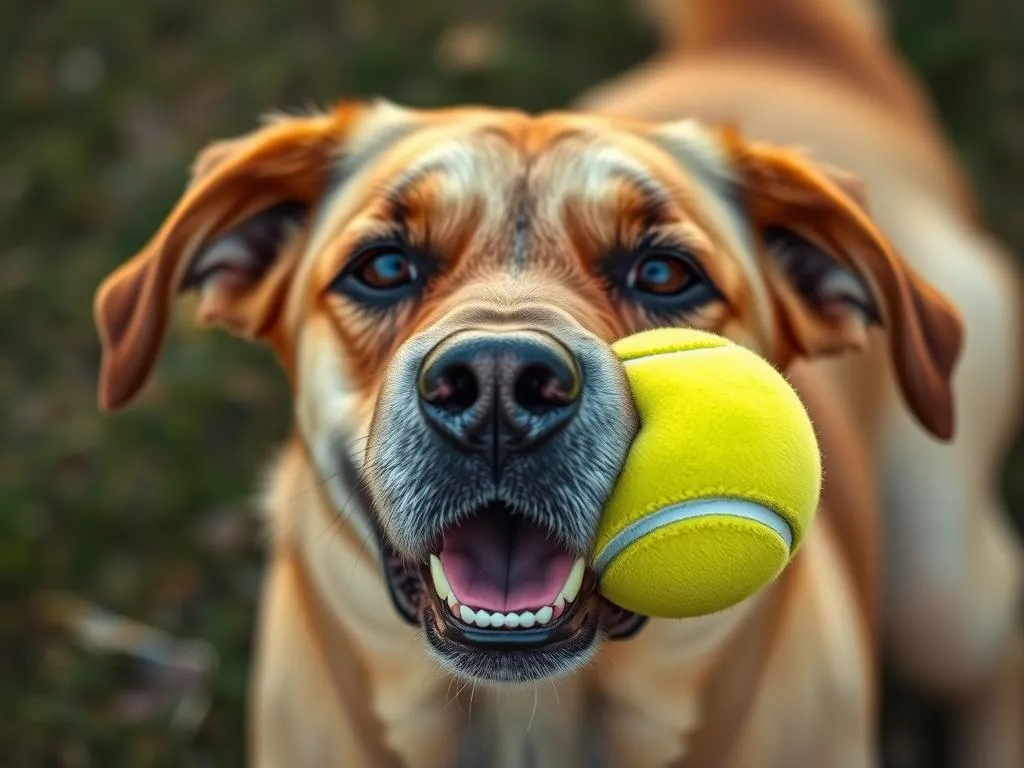
Dogs have an undeniable fascination with tennis balls, and you might find yourself wondering, why do dogs like tennis balls so much? Understanding this behavior can provide insight into the nature of dogs and enhance the bond between you and your furry friend. Engaging in play is vital for a dog’s physical and mental health, and tennis balls often play a significant role in that interaction. Here’s a deep dive into the reasons behind this love for tennis balls.
The Nature of Dogs
To understand why dogs are enamored with tennis balls, it’s essential to explore their instincts and behaviors.
Overview of Canine Instincts and Behaviors
Dogs are descendants of wolves, and their evolutionary background as hunters and gatherers influences much of their behavior today. This hunting instinct manifests during playtime, where activities mimic the skills required for hunting. The act of chasing, retrieving, and even shaking toys like tennis balls channels these ancient instincts, providing dogs with a sense of purpose and fulfillment.
The Role of Play in Dog Development
Play is crucial for a dog’s development. It allows for socialization and exploration, helping puppies learn important social cues from their mothers and littermates. Regular playtime fosters mental health and physical fitness, enabling dogs to express energy in a constructive way. Engaging with toys like tennis balls not only satisfies their instincts but also enhances their overall well-being.
Characteristics of Tennis Balls
Tennis balls possess several characteristics that make them particularly appealing to dogs.
Description of Tennis Balls
Tennis balls are made from a combination of rubber and felt, providing a unique texture that dogs find engaging. They are typically a standard size, making them easy for dogs to carry. This combination of materials ensures durability while maintaining a lightweight structure perfect for throwing and fetching.
Why Tennis Balls Appeal to Dogs
The bright yellow color of most tennis balls makes them highly visible against various backgrounds, capturing a dog’s attention. Their texture is also inviting, allowing dogs to grip and chew them comfortably. The inherent bounciness of tennis balls promotes active engagement, as dogs enjoy chasing after them as they unpredictably bounce away. Importantly, tennis balls are made from non-toxic materials, making them a safe option for play.
The Psychology Behind Play
The allure of tennis balls goes beyond their physical characteristics; it also taps into a dog’s psychology.
The Sensory Stimulation Provided by Tennis Balls
Tennis balls offer multiple sensory stimulations that intrigue dogs:
- Sight: The bright colors attract attention, especially when the ball is moving.
- Sound: Some tennis balls make a squeaking noise when bitten, which can heighten a dog’s excitement.
- Smell: Dogs have an incredible sense of smell, and the scent of rubber combined with outdoor environments can be stimulating.
The Role of Fetch in Fulfilling Natural Instincts
The game of fetch mirrors many instinctual behaviors tied to retrieval and chasing. Dogs are wired to chase moving objects, so when you throw a tennis ball, they respond to their natural instincts. The satisfaction of retrieving the ball and bringing it back to you not only fulfills their chasing instinct but also provides a sense of accomplishment.
Emotional Connection to Owners Through Play
Playing with tennis balls fosters an emotional bond between dogs and their owners. Engaging in shared activities, like a game of fetch, enhances the relationship and provides positive reinforcement. Dogs thrive on praise and treats, and fetching a ball often leads to both, reinforcing their desire to participate in these activities.
Health Benefits of Playing with Tennis Balls
The physical and mental health benefits of playing with tennis balls are significant.
Physical Exercise and Its Importance for Dogs
Playing fetch with tennis balls is an excellent form of exercise for dogs. It helps improve cardiovascular health, maintain healthy weight, and build muscle strength. Regular play with tennis balls can prevent obesity, a growing concern for many dogs, especially in sedentary lifestyles.
Mental Stimulation and Problem-Solving
Beyond physical exercise, tennis balls also provide mental stimulation. Engaging a dog’s mind through active play can reduce boredom, which often leads to destructive behavior. By encouraging problem-solving during fetch, you help develop their cognitive skills while keeping them entertained.
Potential Risks and Safety Considerations
While tennis balls are generally safe, there are some risks to be aware of.
Risks of Playing with Tennis Balls
- Choking Hazards: If a tennis ball becomes damaged or starts to break apart, it can pose a choking risk.
- Dental Health Concerns: Over time, the texture of tennis balls can wear down a dog’s teeth, leading to dental issues.
Recommendations for Safe Play
To ensure safe playtime with tennis balls, consider the following recommendations:
- Choosing the Right Size: Select tennis balls that are appropriate for your dog’s size. Smaller breeds may need smaller balls to prevent choking.
- Regular Inspections: Frequently check for wear and tear. Discard any damaged balls to avoid potential hazards.
Alternative Toys and Activities
If your dog enjoys tennis balls, you might also want to explore alternative toys and activities.
Other Toy Options That Offer Similar Benefits
There are various toys that can provide similar benefits to tennis balls, including:
- Rubber balls: Durable and often designed for chewing.
- Frisbees: Great for dogs that enjoy catching flying objects.
- Plush toys: Ideal for dogs that prefer softer textures.
Engaging Activities Beyond Tennis Balls
Engaging your dog in activities beyond fetching tennis balls can diversify their playtime. Consider agility training, which can improve their coordination and confidence. Tug-of-war is another fun activity that strengthens your bond, while puzzle toys stimulate their minds and keep them engaged.
Importance of Variety in Playtime
Providing a variety of activities and toys helps prevent boredom and keeps your dog mentally stimulated. Mixing up their playtime routine can also help curb any potential behavioral issues that arise from monotony.
Conclusion
In summary, the question why do dogs like tennis balls so much can be answered through a combination of instinctual behavior, physical and mental benefits, and emotional bonding during play. Tennis balls are not just toys; they are an essential part of a dog’s daily routine, contributing to their overall well-being. Engaging your dog with tennis balls, along with other toys and activities, can significantly enhance their quality of life and strengthen your relationship.
FAQs
Can all dogs play with tennis balls?
Most dogs can play with tennis balls, but it’s essential to consider their size and chewing habits. Smaller dogs may require smaller balls to avoid choking hazards.
What are the best types of tennis balls for dogs?
Look for tennis balls specifically designed for dogs, as they are made from safer materials and are more durable. Regular tennis balls can wear down your dog’s teeth over time.
How often should dogs play with tennis balls?
The frequency of play can vary based on the dog’s age, health, and energy levels. Generally, daily play is beneficial, but always balance playtime with rest and other activities.
Understanding the reasons behind your dog’s love for tennis balls can enhance your interactions and help you provide a fulfilling and engaging environment for your furry friend.








